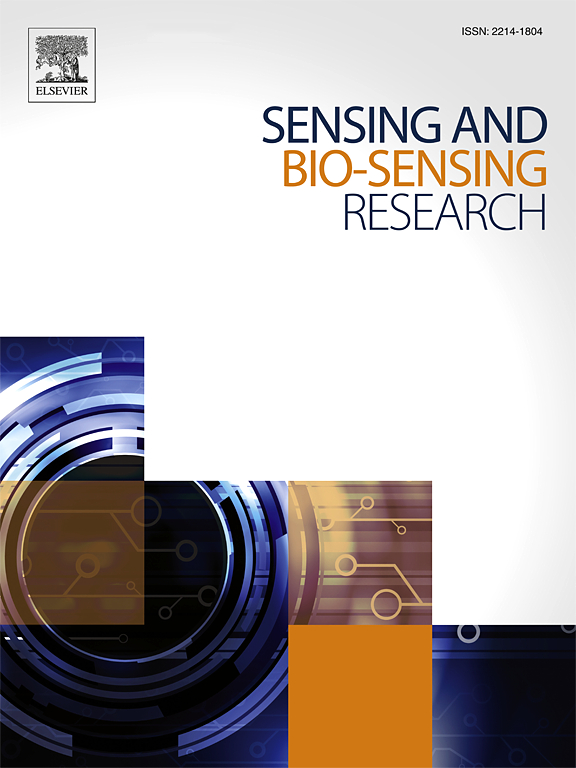A novel electrochemical aptasensor for L-tryptophan detection utilizing photoluminescent covalent organic polymer
IF 5.4
Q1 CHEMISTRY, ANALYTICAL
引用次数: 0
Abstract
A novel method was developed for the sensitive detection of L-tryptophan (Trp) utilizing an imine-linked covalent organic polymer (COP) with inherent photoluminescent properties. The COP was synthesized through the reaction of aminoclay (AC) with terephthalaldehyde (TPA). This COP incorporates building blocks featuring a large conjugated aromatic skeleton, high stability, a rough surface, and uniform morphology, facilitating effective binding with aptamers. Electrochemical testing results demonstrated that the aptasensor based on the COP significantly enhanced the detection of Trp, achieving an exceptionally low detection limit of 0.03 fM within a Trp concentration range of 0.1 fM to 500 nM. This detection limit surpasses those of most other reported Trp sensors. Furthermore, the aptamer-based biosensor exhibited remarkable stability and repeatability. This study introduces a new electrochemical sensing approach for Trp detection based on the COP, showcasing a comprehensive understanding of COP-based biosensor design that can be extended to detect various target compounds. The proposed method presents an innovative and cost-effective solution for the swift and accurate identification of Trp using the COP.
一种利用光致发光共价有机聚合物检测l -色氨酸的新型电化学感应传感器
建立了一种利用具有固有光致发光特性的亚胺共价有机聚合物(COP)灵敏检测l -色氨酸(Trp)的新方法。以氨基clay (AC)和对苯二甲酸(TPA)为原料合成了COP。该COP包含具有大共轭芳香骨架,高稳定性,粗糙表面和均匀形态的构建块,促进与适体的有效结合。电化学测试结果表明,基于COP的感应传感器显著增强了对色氨酸的检测,在0.1 fM ~ 500 nM的色氨酸浓度范围内达到了0.03 fM的极低检测限。这种检测极限超过了大多数其他报道的Trp传感器。此外,基于适配体的生物传感器具有显著的稳定性和可重复性。本研究介绍了一种基于COP的新型色氨酸检测电化学传感方法,展示了对基于COP的生物传感器设计的全面理解,该设计可以扩展到检测各种目标化合物。该方法为利用COP快速、准确地识别Trp提供了一种创新、经济的解决方案。
本文章由计算机程序翻译,如有差异,请以英文原文为准。
求助全文
约1分钟内获得全文
求助全文
来源期刊

Sensing and Bio-Sensing Research
Engineering-Electrical and Electronic Engineering
CiteScore
10.70
自引率
3.80%
发文量
68
审稿时长
87 days
期刊介绍:
Sensing and Bio-Sensing Research is an open access journal dedicated to the research, design, development, and application of bio-sensing and sensing technologies. The editors will accept research papers, reviews, field trials, and validation studies that are of significant relevance. These submissions should describe new concepts, enhance understanding of the field, or offer insights into the practical application, manufacturing, and commercialization of bio-sensing and sensing technologies.
The journal covers a wide range of topics, including sensing principles and mechanisms, new materials development for transducers and recognition components, fabrication technology, and various types of sensors such as optical, electrochemical, mass-sensitive, gas, biosensors, and more. It also includes environmental, process control, and biomedical applications, signal processing, chemometrics, optoelectronic, mechanical, thermal, and magnetic sensors, as well as interface electronics. Additionally, it covers sensor systems and applications, µTAS (Micro Total Analysis Systems), development of solid-state devices for transducing physical signals, and analytical devices incorporating biological materials.
 求助内容:
求助内容: 应助结果提醒方式:
应助结果提醒方式:


